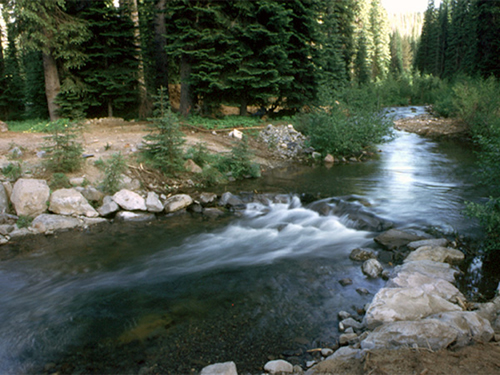Rock Cross Vane
What is it?
Rock cross vanes and similar in design and function to rock vortex weirs. The difference between the two structures is that the top level of rock in cross vanes does not contain any spaces. This structure is constructed to direct streamflow and control stream grade. Fish passage should be considered during design cross vanes will not become a barrier. These structures are used in streams with predominantely gravel and cobble substrates.
 (
photo from Wild Fish Habitat Initiative)
(
photo from Wild Fish Habitat Initiative)
Conservation Benefits
- Creates a downstream scour pool which can be utilizied by fish and other aquatic organisms
- Prevents disruption of sediment transport
- Provides instream habitat for fish and other aquatic organisms
- Reduces streambank erosion and redirects flow to the center of the stream
What does it include?
Rock cross vanes are constructed out of rock. Rock size and placement will depend on stream depth, location in the stream, and baseflow. Footer stones are placed along the bottom of the stream (typically one or two layers) to support the top level of stone (vane stones). Stones should be large enough to not be dislodged in moderate and large storm events.
Rock Cross Vane Links
Rock Cross Vane Bibliography
- Crispell and Endreny. 2009. Hyporheic exchange flow around constructed in-channel structures and implications for restoration design. Hydrological Processes 23: 1158-1168.
- Johnson et al. 2002. Stream restoration in the vacinity of bridges. Journal of the American Water Resources Association 38: 55-67.
- Rosgen. 2004. The cross-vane, w-weir and j-hook vane structures: their description, design and application for stream stabilization and river restoration. Proceedings of Wetlands Engineering and River Restoration Conference 2001.